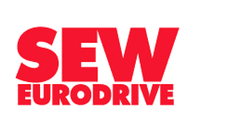Reliability and planned maintenance as key factors in ensuring uptime
Stockholding and spares form an important part of the company’s business strategy in Africa.
“It contributes a significant amount to our business, as we pride ourselves on the ability to offer availability of spares and accessories as part of our after sales support on a 24/7 basis,” he states.
Obermeyer reveals that there is constant demand for accessories and spares, with some customers ordering critical spares ahead of time in order to have them available when they are needed.
There are numerous accessories that are available to customers through SEW-EURODRIVE, including; cooling systems, condition monitoring equipment, maintenance operating manuals, and selection and design software.
SEW-EURODRIVE boasts a stockholding of 80 percent of the stock items that the company sells at any given time. Obermeyer explains that if the required part is available from any of the company's five South African branches, it can be delivered to the customer within a very short period of time.
"If the spares or accessories are not locally available, we can source them from our global network within days. SEW-EURODRIVE keeps a large inventory of stock nationally, and therefore we are closer to the customer due to our branch network,” he continues.
Obermeyer reveals that there are two types of customers in the African market, namely those who operate the equipment until it needs replacing, and those who make use of conditioning monitoring equipment and the benefits that it provides.
“There are several arguments for the use of condition monitoring equipment. Firstly, there is a lack of skills in the country, and maintenance staff is sometimes not equipped to look after the units.” Although the cost of adding on the additional monitoring equipment may seem expensive at first, the pay-off is unrivalled compared to the cost of replacing a unit.
“Today customers have the option of adding many conditioning monitoring options, like vibration, temperature and oil monitoring which assist them in knowing when the unit is in need of maintenance. In this way the customer can plan for the maintenance and avoid productivity losses” adds Raymond.
SEW-EURODRIVE through its Drive Academy offers customers courses which assist them to understand and maintain the unit efficiently.
Furthermore the company has fully equipped field service vehicles which can assist customers with onsite with commissioning, fault finding and basic repairs and maintenance.
“We are noticing an increased popularity in site surveys” which is part of one module of our CDS program comments Obermeyer. The field service team and engineering department would visit the customer site and do a full survey of all the units and where the unit is in terms of life span. The team would then recommend a course of action in terms of maintenance, repair or replacement. This is of tremendous assistance to the maintenance manager in terms of planning forward.
Ends.
Media Contact
Jana Klut
NGAGE Public Relations
Phone: (011) 867-7763
Fax: 086 512 3352
Cell: 074 111 4900
Email: jana [at] ngage [dot] co [dot] za
Web: www.ngage.co.za
Browse the Ngage Media Zone for more client press releases and photographs at http://media.ngage.co.za

